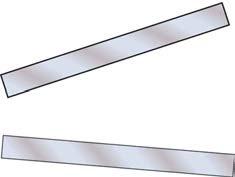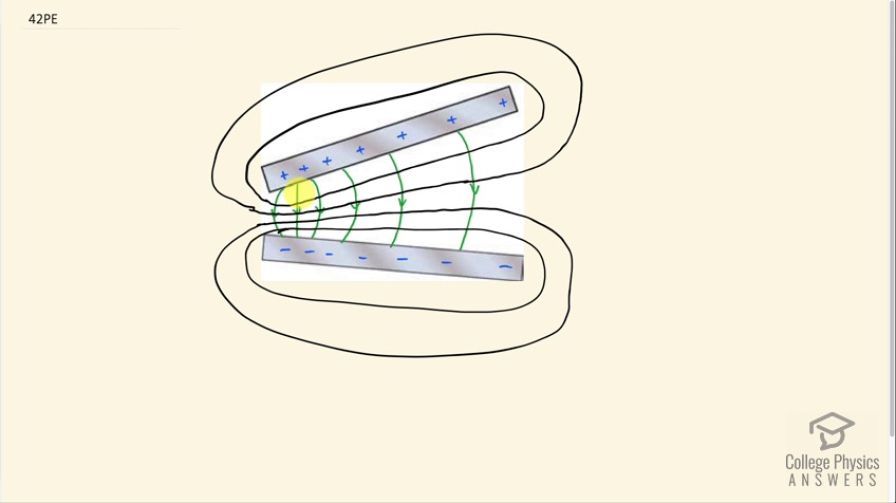Question
Sketch the equipotential lines surrounding the two conducting plates shown in Figure 19.36, given the top plate is positive and the bottom plate has an equal amount of negative charge. Be certain to indicate the distribution of charge on the plates. Is the field strongest where the plates are closest? Why should it be?

Final Answer
Please see the solution video.
Solution video
OpenStax College Physics, Chapter 19, Problem 42 (Problems & Exercises)

vote with a rating of
votes with an average rating of
.
Video Transcript
This is College Physics Answers with Shaun Dychko. To draw equipotential lines, I find it helpful to draw electric field lines first so the electric field lines are green and we have some positive charge on this top conducting plate and some negative charge on the bottom conducting plate. The magnitude of the charge is the same but just the top one's positive and the bottom one's negative. There's a distribution of charge here that is not uniform because this end is closer to the bottom plate; the negative charges in the bottom are attracting the positive charges in the top and so they will bunch up on this left side here. You could also say the plates are closer together here and for that reason, the electric field will be larger since electric field is voltage divided by distance, or separation. So we have electric field lines here... the field lines are denser to indicate that the field strength is higher here and because there's higher electric field, the equipotential lines are closer together because given a stronger field, going a small distance will result in the same amount of work per coulomb versus over here, you would have to go a larger distance to do that same work per coulomb, which is what voltage is, it's you know, joules per coulomb. So it is intentional to have a greater spacing here versus a small spacing here between the equipotential lines. And another thing to keep in mind is that they are meant to be perpendicular to the field lines and the reason for that is that if you were to move a charge from here to here, there would be no work done by the electric field since this direction of motion is perpendicular to the force that the electric field would apply and so they are at the same potential energy. And there we go!